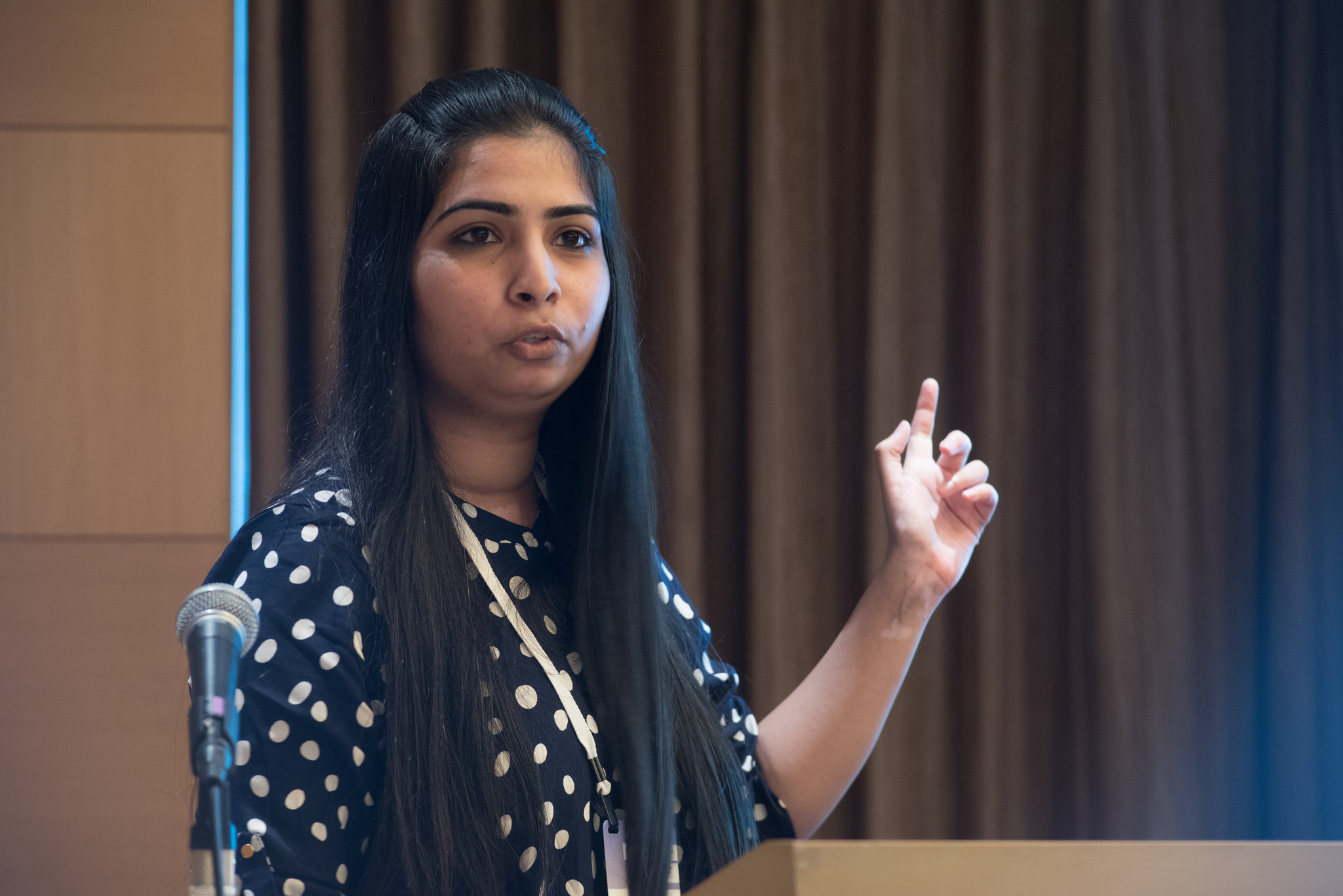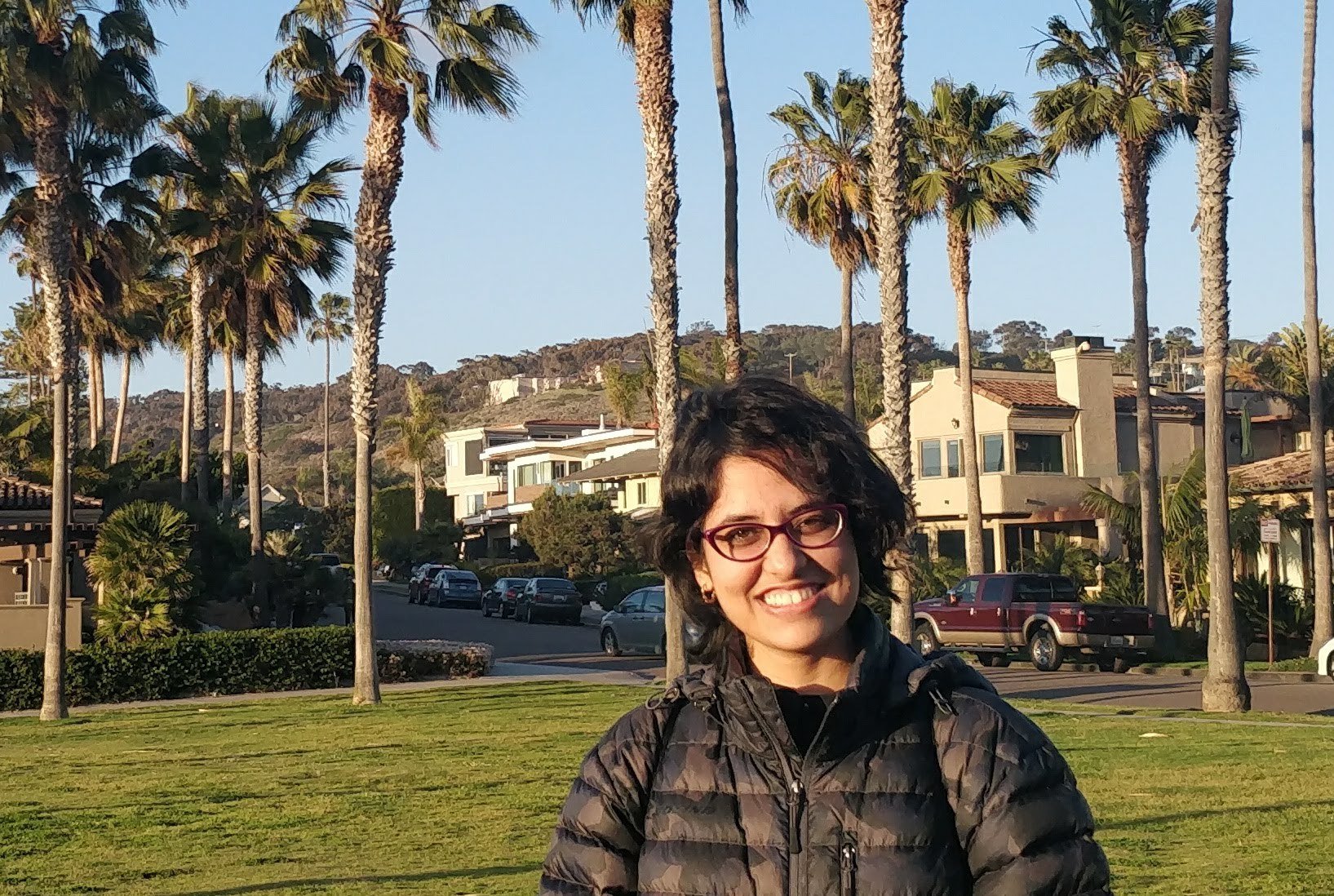![[RSS]](/static/img/feed-icon-14x14.2168a573d0d4.png) Conservancy Blog
Conservancy Blog
Highlighting Some of Our Leaders in the Linux Kernel
by on September 20, 2018
This week has shown two interesting events related to Linux. Yesterday, the New Yorker published an article pointing out that abusive behavior in the Linux project specifically has created an unfriendly and unwelcoming environment for underrepresented groups. Linus Torvalds, Linux Foundation Fellow and leader of the Linux project, after having been contacted by the New Yorker in connection with the article, admitted his past behavior has been problematic and is taking time off from the project.
While these moves are a step forward, they cannot alone change the problematic culture we have in technology generally, and Free and Open Source Software (FOSS) in particular. One press article and one leader temporarily stepping aside can only take one small step toward reversing decades of unfriendly culture, where abusive language and conflict are often considered the appropriate way to resolve disputes. We at Conservancy, particularly in its Outreachy project, do our best to help improve this situation for FOSS.
Outreachy provides mentors and coordinators a method and process to promote inclusive culture in their FOSS projects. Our program would not be possible without a lot of key FOSS contributors who behave professionally and are deeply committed to improving the situation. We thank all the people who have contributed to great experiences for Outreachy mentees and hope that recent news helps more people in the community take heart that change is possible. I contacted a few of these people to highlight here.

Vaishali Thakkar, Outreachy internship graduate who now co-coordinates of kernel internships commented:
"Outreachy is the best thing that has ever happened to me. I came from an education system where asking questions didn't always end up in positive encounters but rather we were made fun of because not knowing things isn't normal. My first friendly encounters with bunch of mentors in outreachy kernel mailing list also helped me to understand that open learning and open education is not only normal here [in open source] but is also something you are celebrated for. Which was really a huge thing for me at that time because it helped me to build my confidence and make my space in the open source industry.
Lately, I've been giving a lot of Linux Kernel contribution workshops in Indian universities [offline] and in Kenya [online] to spread the word about the wonderful opportunities the program provides with a hope to increase more diverse set of contributors in the kernel community. Outreachy is touching so many lives at so many levels ranging from giving equal pay opportunity to people traditionally underrepresented in open source to help building a welcoming and diverse communities. My motivation for volunteering as a coordinator is merely an expression of saying thanks to all wonderful people who has helped me reach at where I am today and also about enjoying a feeling that comes from playing a role in building welcoming communities together."

Shraddha Barke, who is also an Outreachy internship graduate and now co-coordinates kernel internships with the Outreachy project added:
"During my undergrad, I was desperately looking for opportunities to work on real problems. That's when I got the chance to intern with Outreachy and that exposed me to the wonderful Linux community and gave me lifelong mentors and friends. Julia Lawall has mentored me for the past few years, right from Outreachy to my graduate school. Outreachy opened more doors for me than I could've imagined.
My motivation to volunteer stems from the feeling to give back to the community that has given me so much. Outreachy provides a supportive platform for people underrepresented in technology. I love knowing that I'm playing a small role in the worldwide impact Outreachy is having today! And I'm excited to see how big it will grow. :)"

Julia Lawall, who has previously coordinated Outreachy participation in Linux, and continues to mentor noted:
"As a former teacher and as a researcher, I have observed that many female students who start in computer science become discouraged and drop out during or after their studies. Thus, complementarily to my research activities, over the past four years, I have been active as a mentor and then as the coordinator for Linux for the Outreachy Internship program. Providing female students in computer science with the opportunity to interact with and get feedback from top-quality well-known developers helps build their confidence making it possible to move beyond the inevitable discouraging moments. There were 71 applications for Linux internships while I was coordinator for Linux, and 30 internships offered. After their internships, interns have gotten jobs at companies such as Red Hat, Intel, Bloomberg, Oracle and Collabora. Several interns have instead opted for further studies, including two who are starting as PhD students at UCSD and Columbia this fall. Former interns have also been active in outreach, both through informal events that they have organized on their own and through Outreachy itself."

Daniel Vetter, who mentors Outreachy interns in the Linux Kernel's GPU driver subsystem adds:
"The Outreachy program is the best program we have to improve diversity and inclusiveness in FOSS long-term. While Linux as a project is deeply problematic, there are pockets of sub-communities who really care about creating inclusive spaces and can provide Outreachy participants a great internship experience contributing to critical technology low in the stack.
I am very glad to provide my help supporting Outreachy participants as a mentor and Outreachy's critical role in building better communities and a diverse and inclusive FOSS culture."
We hope the events of this week indicate that times are changing, and the status quo of behavior fails as an adequate standard for civility, inclusiveness and diversity. We thank all those who have spent years, both behind the scenes and in the public fray, pointing out and pushing for inclusiveness in Linux and all other FOSS communities. We welcome mentors, coordinators and sponsors to get involved in Outreachy and we hope to continue working on related issues and supporting those of you who are working behind the scenes to make free software a place for everyone.
Conservancy Staff on the Road
by on September 20, 2018
Bradley Kuhn, our Distinguished Technologist will be speaking about license compliance in the network attached storage market at the Storage Developer Conference He speaks on Monday, September 24 at 10:35 AM. You might also want to check out the session Christoph Hellwig, Kernel Hacker (and copyleft champion against VMware) is leading on Tuesday, September 25th at 7:00 PM.
Our Director of Community Operations, Deb Nicholson, is kicking off Open Source Lisbon with a keynote on how free software is both good for society and good for business. Her talk is on Thursday, September, 27th at 9:25am. The one day conference is aimed at encouraging national and international companies to embrace open source technologies and collaborative development models.
Both Karen Sandler, our executive director and Bradley Kuhn will be participating in a full day Seminar on GPL Enforcement and Legal Ethics in Berkeley, CA on Thursday, September 27th. Registration is open to the public, although the event may be particularly useful for law students and legal professionals, who may be able to earn continuing legal education (CLE) credits for participating.
If you're interested in having a Conservancy staff member present at your event, please don't hesitate to get in touch!
Eighth Annual RacketCon
by on September 4, 2018
RacketCon is coming right up! Join Racket developers, contributors, programmers, educators, and bystanders in St. Louis, Missouri on September 29th and 30th. Early bird (aka cheaper) tickets are available through September 8th.
This year's event will again be live-streamed so you can tune in, even if you can't make the trip. This year's keynote speaker is Kent Dybvig. Dybvig is the creator and primary developer of Chez Scheme and author of The Scheme Programming Language. Other highlights include talks on using Racket for data analysis, to write quick scripts and in the humanities department.
More details, including "Early bird" tickets and the Friendly Environment Policy can be found on the conference website.
Challenges in Maintaining A Big Tent for Software Freedom
by on August 30, 2018
In recent weeks, I've been involved with a complex internal discussion by a major software freedom project about a desire to take a stance on social justice issues other than software freedom. In the discussion, many different people came forward with various issues that matter to them, including vegetarianism, diversity, and speech censorship, wondering how that software freedom project should handle other social justices causes that are not software freedom. This week, (separate and fully unrelated) another project, called Lerna, publicly had a similar debate. The issues involved are challenging, and it deserves careful consideration regardless of how the issue is raised.
One of the first licensing discussions that I was ever involved in the mid 1990s was with a developer, who was a lifelong global peace activist, objecting to the GPL because it allowed the USA Department of Defense and the wider military industrial complex to incorporate software into their destructive killing machines. As a lifelong pacifist myself, I sympathized with his objection, and since then, I have regularly considered the question of “do those who perpetrate other social injustices deserve software freedom?”
I ultimately drew much of my conclusion about this from activists for free speech, who have a longer history and have therefore had longer time to consider the philosophical question. I remember in the late 1980s when I first learned of the ACLU, and hearing that they assisted the Klu-Klux Klan in their right to march. I was flabbergasted; the Klan is historically well-documented as an organization that was party to horrific murder. Why would the ACLU defend their free speech rights? Recently, many people had a similar reaction when, in defense of the freedom of association and free speech of the National Rifle Association (NRA), the ACLU filed an amicus brief in a case involving the NRA, an organization that I and many others oppose politically. Again, we're left wondering: why should we act to defend the free speech and association rights of political causes we oppose — particularly for those like the NRA and big software companies who have adequate resources to defend themselves?
A few weeks ago, I heard a good explanation of this in an interview with ACLU's Executive Director, whom I'll directly quote, as he stated succinctly the reason why ACLU has a long history of defending everyone's free speech and free association rights:
[Our decision] to give legal representation to Nazis [was controversial].… It is not for the government's role to decide who gets a permit to march based on the content of their speech. We got lots of criticism, both internally and externally. … We believe these rights are for everyone, and we truly mean it — even for people we hate and whose ideology is loathsome, disgusting, and hurtful. [The ACLU can't be] just a liberal/left advocacy group; no liberal/left advocacy group would take on these kinds of cases. … It is important for us to forge a path that talks about this being about the rights of everyone.
Ultimately, fighting for software freedom is a social justice cause similar to that of fighting for free speech and other causes that require equal rights for all. We will always find groups exploiting those freedoms for ill rather than good. We, as software freedom activists, will have to sometimes grit our teeth and defend the rights to modify and improve software for those we otherwise oppose. Indeed, they may even utilize that software for those objectionable activities. It's particularly annoying to do that for companies that otherwise produce proprietary software: after all, in another realm, they are actively working against our cause. Nevertheless, either we believe the Four Software Freedoms are universal, or we don't. If we do, even our active political opponents deserve them, too.
I think we can take a good example from the ACLU on this matter. The ACLU, by standing firm on its core principles, now has, after two generations of work, developed the power to make impact on related causes. The ACLU is the primary organization defending immigrants who have been forcibly separated from their children by the USA government. I'd posit that only an organization with a long history of principled activity can have both the gravitas and adequate resources to take on that issue.
Fortunately, software freedom is already successful enough that we can do at least a little bit of that now. For example, Conservancy already took a public position, early, in opposition of Trump's immigration policy because of its negative impact on software freedom, whose advancement depends on the free flow of movement by technologists around the world. Speaking out from our microphone built from our principled stand on software freedom, we can make an impact that denying software freedom to others never could. Specifically, rather than proprietarizing the license of projects to fight USA's Immigration and Customs Enforcement (ICE) and its software providers, I'd encourage us to figure out a specific FOSS package that we can prove is deployed for use at ICE, and use that fact as a rhetorical lever to criticize their bad behavior. For example, has anyone investigated if ICE uses Linux-based servers to host their otherwise proprietary software systems? If so, the Linux community is already large and powerful enough that if a group of Linux contributors made a public statement in political opposition to the use of Linux in ICE's activities, it would get national news attention here in the USA. We could even ally with the ACLU to assure the message is heard. No license change is needed to do that, and it will surely be more effective.
Again, this is how software freedom is so much like free speech. We give software freedom to all, which allows them to freely use and deploy the software for any purpose, just like hate groups can use the free speech microphone to share their ideas. However, like the ACLU, software freedom activists, who simultaneously defend all users equal rights in copying, sharing and modifying the software, can use their platform — already standing on the moral high ground that was generated by that long time principled support of equal rights — to speak out against those who bring harm to society in other ways.
Finally, note that the
Four Software Freedoms obviously should never be the only laws and/or rules of conduct of our society. Just
like you should be prevented from (proverbially) falsely yelling Fire!
in a crowded movie theater,
you still should be stopped when you deploy Free Software in a manner that violates some other
law, or commits human rights violations. However, taking away software freedom from bad actors, while it seems like a
panacea to other societal ills, will simply backfire. The
simplicity and beauty of copyleft is that it takes away someone's software
freedom only at the moment when they take away someone else's
software freedom; copyleft ensures that is the only reason your
software freedom should be lost. Simple tools work best when your social
justice cause is an underdog, and we risk obscurity of our software if we
seek to change the fundamental simple design of copyleft licensing to include licensing
penalties for other social justice grievances (— even if we could agree on which other
non-FOSS causes warrant “copyleft protection”). It
means we have a big tent for software freedom, and we sometimes stand under it with
people whose behavior we despise. The value we have is our ability to
stand with them under the tent, and tell them: “while I respect your
right to share and improve that software, I find the task you're doing with
the software deplorable.”. That's the message I deliver to any ICE
agent who used Free Software while forcibly separating parents from their children.
Next page (older) » « Previous page (newer)
1 2 3 4 5 6 7 8 9 10 11 12 13 14 15 16 17 18 19 20 21 22 23 24 25 26 27 28 29 30 31 32 33 34 35 36 [37] 38 39 40 41 42 43 44 45 46 47 48 49 50 51 52 53 54 55 56 57 58 59 60 61 62 63 64 65 66 67 68
